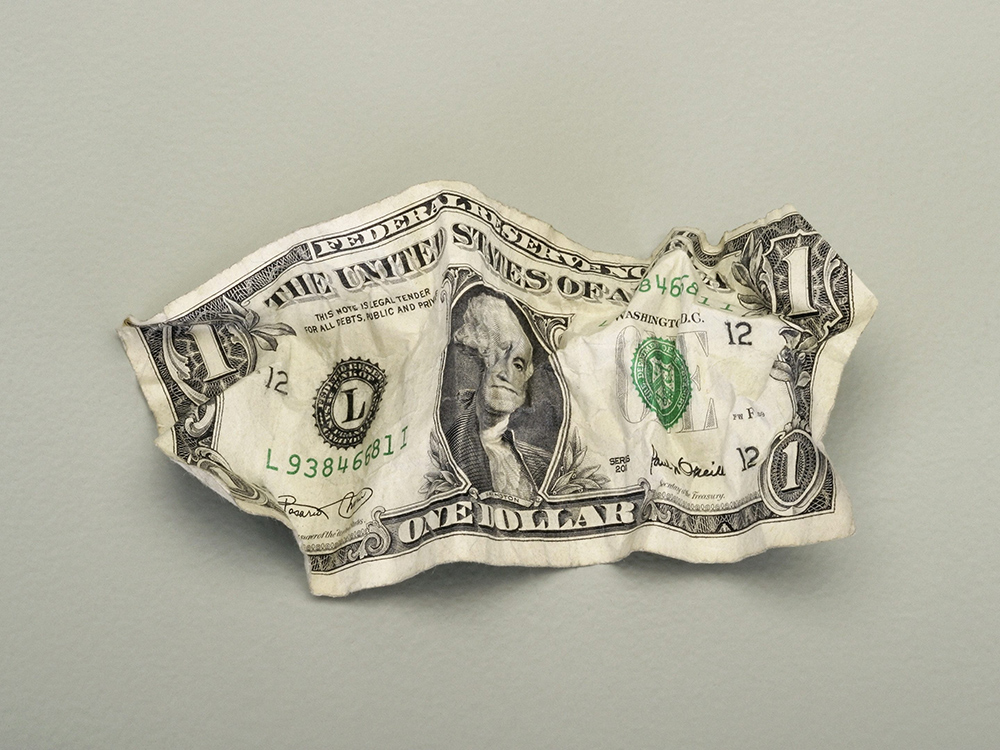
本周美元可能跌破紀(jì)錄。
上周,美元錄得自去年11月以來最大跌幅,令眾多策略師和投資者認(rèn)為全球主要儲備貨幣美元終于迎來了轉(zhuǎn)折點(diǎn)。如果他們的觀點(diǎn)是對的,這將會給全球經(jīng)濟(jì)和金融市場帶來深遠(yuǎn)的影響。
此前,由于通脹顯露降溫的跡象,市場加大了對美聯(lián)儲(Federal Reserve)很快就會停止加息的押注,導(dǎo)致美元匯率即將跌至一年多以來的最低水平。美元看跌者甚至把目光投向了更遠(yuǎn)的未來,稱降息是不可避免的——市場普遍認(rèn)為這將會發(fā)生在2024年的某個時候。
上周五,標(biāo)準(zhǔn)銀行(Standard Bank)十國集團(tuán)策略主管史蒂文?巴羅在一份報(bào)告中說:“我們之所以預(yù)測美元將在未來幾年內(nèi)走弱,其中一個原因是美聯(lián)儲緊縮周期將演變成寬松周期,而這即使在其他央行同時降息的情況下都會拉低美元。”
美元長期下跌可能產(chǎn)生的連鎖反應(yīng)難以估量。這將會降低發(fā)展中國家進(jìn)口商品的價格,從而有利于緩解其通脹壓力。過去數(shù)月,日元一直在下跌。美元走勢的逆轉(zhuǎn)還將提振日元等貨幣,并打亂與日元走弱掛鉤的常用交易策略。更廣泛地說,美元疲軟很可能會促進(jìn)美國企業(yè)的出口,但會不利于歐洲、亞洲和其他地區(qū)的企業(yè)。
彭博美元指數(shù)(Bloomberg Dollar Index)上周下降了2%,也推動了以美元計(jì)價的大宗商品(如石油和黃金)價格的上漲。
許多投資者幾個月來一直在等待美元走低,此次的美元拋售潮讓從M&G Investments到瑞銀資產(chǎn)管理(UBS Asset Management)的基金經(jīng)理們準(zhǔn)備好迎接日元和新興市場貨幣這類貨幣的優(yōu)異表現(xiàn)。
法國巴黎資產(chǎn)管理公司(BNP Paribas Asset Management)的基金經(jīng)理彼得?瓦薩洛表示:“最有可能的情況是,美元將在未來幾個月持續(xù)疲軟。”他預(yù)計(jì)澳大利亞元、新西蘭元和挪威克郎將走強(qiáng)。
當(dāng)然,投資者也可能會因過早押注導(dǎo)致貶值的美聯(lián)儲降息而蒙受損失,這早已不是什么新鮮的事。今年年初的情況就是如此,那時美元看起來正處于長期下跌的邊緣,結(jié)果卻逐漸趨于穩(wěn)定,因?yàn)槊绹?jīng)濟(jì)數(shù)據(jù)表明美聯(lián)儲不會停止加息。
看跌美元者所面臨的威脅在于,這個過程可能會重演,尤其是美聯(lián)儲很可能會最早于本月進(jìn)一步收緊貨幣政策。
景順投資管理公司(Invesco Asset Management)的喬治娜?泰勒目前還不打算縮減她的美元風(fēng)險(xiǎn)敞口。她仍在密切地關(guān)注著市場數(shù)據(jù),并且認(rèn)為與通脹的戰(zhàn)斗還沒有結(jié)束。
鑒于實(shí)際收益率的絕對差值依然很高,喬治娜表示:“雖然利率差漂浮不定,但我是不會放棄美元的。”
考慮到美國的經(jīng)濟(jì)韌性,高盛集團(tuán)的邁克爾?卡希爾預(yù)測,美元的跌幅無論如何都不可能超過以往周期。然而,如果美聯(lián)儲宣布結(jié)束對抗通脹,但歐洲央行被迫要在更長時間內(nèi)維持高利率,美元的支撐就可能會崩潰。
高盛十國集團(tuán)外匯策略師卡希爾說:“可能導(dǎo)致美元進(jìn)一步下跌的最大風(fēng)險(xiǎn)是通脹情況出現(xiàn)變化。”該銀行預(yù)測,到2024年,美元匯率將從現(xiàn)在的1歐元兌1.12美元跌至1歐元兌1.15美元,而日元匯率將從現(xiàn)在的1美元兌139日元漲至1美元兌125日元。
一些估值指標(biāo)也為看跌美元者提供了依據(jù)。美元對日元的優(yōu)勢尤其明顯,日元的實(shí)際有效匯率令其交易價格幾乎達(dá)到幾十年來的最低點(diǎn)。
東方匯理資產(chǎn)管理(Amundi Asset Management)的外匯策略主管帕雷什?烏帕德亞雅表示:“從估值角度來看,美元仍被嚴(yán)重高估。我認(rèn)為市場將開始淡化這種情緒。”
他指出美國的雙重赤字(貿(mào)易和預(yù)算赤字)是結(jié)構(gòu)性阻力。但他也想到了市場觀察人士經(jīng)常提及的另一種現(xiàn)象:美元微笑理論。
該理論認(rèn)為,當(dāng)美國陷入嚴(yán)重衰退或強(qiáng)勁擴(kuò)張時,美元往往會走強(qiáng),而在溫和增長時期美元則會趨于疲軟。
烏帕德亞雅說:“如果美國計(jì)劃實(shí)現(xiàn)軟著陸,這可能是美元走弱最佳的依據(jù)。”(財(cái)富中文網(wǎng))
——努爾?阿勒?阿里(Nour Al Ali)協(xié)助編撰。
譯者:中慧言-劉嘉歡
本周美元可能跌破紀(jì)錄。
上周,美元錄得自去年11月以來最大跌幅,令眾多策略師和投資者認(rèn)為全球主要儲備貨幣美元終于迎來了轉(zhuǎn)折點(diǎn)。如果他們的觀點(diǎn)是對的,這將會給全球經(jīng)濟(jì)和金融市場帶來深遠(yuǎn)的影響。
此前,由于通脹顯露降溫的跡象,市場加大了對美聯(lián)儲(Federal Reserve)很快就會停止加息的押注,導(dǎo)致美元匯率即將跌至一年多以來的最低水平。美元看跌者甚至把目光投向了更遠(yuǎn)的未來,稱降息是不可避免的——市場普遍認(rèn)為這將會發(fā)生在2024年的某個時候。
上周五,標(biāo)準(zhǔn)銀行(Standard Bank)十國集團(tuán)策略主管史蒂文?巴羅在一份報(bào)告中說:“我們之所以預(yù)測美元將在未來幾年內(nèi)走弱,其中一個原因是美聯(lián)儲緊縮周期將演變成寬松周期,而這即使在其他央行同時降息的情況下都會拉低美元。”
美元長期下跌可能產(chǎn)生的連鎖反應(yīng)難以估量。這將會降低發(fā)展中國家進(jìn)口商品的價格,從而有利于緩解其通脹壓力。過去數(shù)月,日元一直在下跌。美元走勢的逆轉(zhuǎn)還將提振日元等貨幣,并打亂與日元走弱掛鉤的常用交易策略。更廣泛地說,美元疲軟很可能會促進(jìn)美國企業(yè)的出口,但會不利于歐洲、亞洲和其他地區(qū)的企業(yè)。
彭博美元指數(shù)(Bloomberg Dollar Index)上周下降了2%,也推動了以美元計(jì)價的大宗商品(如石油和黃金)價格的上漲。
許多投資者幾個月來一直在等待美元走低,此次的美元拋售潮讓從M&G Investments到瑞銀資產(chǎn)管理(UBS Asset Management)的基金經(jīng)理們準(zhǔn)備好迎接日元和新興市場貨幣這類貨幣的優(yōu)異表現(xiàn)。
法國巴黎資產(chǎn)管理公司(BNP Paribas Asset Management)的基金經(jīng)理彼得?瓦薩洛表示:“最有可能的情況是,美元將在未來幾個月持續(xù)疲軟。”他預(yù)計(jì)澳大利亞元、新西蘭元和挪威克郎將走強(qiáng)。
當(dāng)然,投資者也可能會因過早押注導(dǎo)致貶值的美聯(lián)儲降息而蒙受損失,這早已不是什么新鮮的事。今年年初的情況就是如此,那時美元看起來正處于長期下跌的邊緣,結(jié)果卻逐漸趨于穩(wěn)定,因?yàn)槊绹?jīng)濟(jì)數(shù)據(jù)表明美聯(lián)儲不會停止加息。
看跌美元者所面臨的威脅在于,這個過程可能會重演,尤其是美聯(lián)儲很可能會最早于本月進(jìn)一步收緊貨幣政策。
景順投資管理公司(Invesco Asset Management)的喬治娜?泰勒目前還不打算縮減她的美元風(fēng)險(xiǎn)敞口。她仍在密切地關(guān)注著市場數(shù)據(jù),并且認(rèn)為與通脹的戰(zhàn)斗還沒有結(jié)束。
鑒于實(shí)際收益率的絕對差值依然很高,喬治娜表示:“雖然利率差漂浮不定,但我是不會放棄美元的。”
考慮到美國的經(jīng)濟(jì)韌性,高盛集團(tuán)的邁克爾?卡希爾預(yù)測,美元的跌幅無論如何都不可能超過以往周期。然而,如果美聯(lián)儲宣布結(jié)束對抗通脹,但歐洲央行被迫要在更長時間內(nèi)維持高利率,美元的支撐就可能會崩潰。
高盛十國集團(tuán)外匯策略師卡希爾說:“可能導(dǎo)致美元進(jìn)一步下跌的最大風(fēng)險(xiǎn)是通脹情況出現(xiàn)變化。”該銀行預(yù)測,到2024年,美元匯率將從現(xiàn)在的1歐元兌1.12美元跌至1歐元兌1.15美元,而日元匯率將從現(xiàn)在的1美元兌139日元漲至1美元兌125日元。
一些估值指標(biāo)也為看跌美元者提供了依據(jù)。美元對日元的優(yōu)勢尤其明顯,日元的實(shí)際有效匯率令其交易價格幾乎達(dá)到幾十年來的最低點(diǎn)。
東方匯理資產(chǎn)管理(Amundi Asset Management)的外匯策略主管帕雷什?烏帕德亞雅表示:“從估值角度來看,美元仍被嚴(yán)重高估。我認(rèn)為市場將開始淡化這種情緒。”
他指出美國的雙重赤字(貿(mào)易和預(yù)算赤字)是結(jié)構(gòu)性阻力。但他也想到了市場觀察人士經(jīng)常提及的另一種現(xiàn)象:美元微笑理論。
該理論認(rèn)為,當(dāng)美國陷入嚴(yán)重衰退或強(qiáng)勁擴(kuò)張時,美元往往會走強(qiáng),而在溫和增長時期美元則會趨于疲軟。
烏帕德亞雅說:“如果美國計(jì)劃實(shí)現(xiàn)軟著陸,這可能是美元走弱最佳的依據(jù)。”(財(cái)富中文網(wǎng))
——努爾?阿勒?阿里(Nour Al Ali)協(xié)助編撰。
譯者:中慧言-劉嘉歡
It just may have been the week that broke the dollar.
The greenback’s worst slump since November has a bevy of strategists and investors saying a turning point is finally at hand for the world’s primary reserve currency. If they’re right, there will be far-reaching consequences for global economies and financial markets.
The US currency is teetering at the lowest level in more than a year after signs of cooling inflation bolstered bets that the Federal Reserve will soon stop hiking interest rates. Dollar bears are looking even further ahead, to what they say are inevitable rate cuts, something the market consensus sees happening at some point in 2024.
“Our call for the dollar to enter a multi-year downtrend is partly based on the fact that the Fed’s tightening cycle will morph into an easing cycle, and this will pull the dollar down even as other central banks cut as well,” Steven Barrow, head of G-10 strategy at Standard Bank, said in a note on Friday.
It’s hard to overstate the potential ripple effects from a long-term greenback slide. It would reduce import prices for developing nations, helping ease their inflation pressures. A greenback reversal also stands to bolster currencies like the yen, which has been tumbling for months, and upend popular trading strategies tied to a weaker yen. More broadly, a softer US currency would tend to boost American firms’ exports at the expense of their counterparts in Europe, Asia and elsewhere.
The Bloomberg dollar index’s 2% decline last week also contributed to gains in greenback-priced commodities such as oil and gold.
Many investors have been waiting for a downtrend in the dollar for months and the selloff has fund managers from M&G Investments to UBS Asset Management bracing for an outperformance in the likes of the yen and emerging-market currencies.
“The most likely path forward is the dollar remains weak throughout the coming months,” said Peter Vassallo, a fund manager at BNP Paribas Asset Management. He’s betting on gains for the Australian dollar, New Zealand dollar and Norwegian krone.
Of course, there’s a long history of investors getting burned by premature bets on Fed rate cuts that would sink the dollar. That was the case early this year, when the currency seemed to be on the verge of a protracted downtrend only to stabilize as US economic data drove home that the Fed wasn’t about to stop hiking.
For the bears, the threat is that dynamic repeats itself, especially with the Fed likely to tighten further as soon as this month.
At Invesco Asset Management, Georgina Taylor isn’t prepared to reduce her dollar exposure just yet. Still firmly in data-watching mode, she’s not ready to conclude the battle to tame inflation is over.
“The interest-rate differential story is wavering but I wouldn’t give up on the dollar,” she said, given that the absolute difference in real yields remains high.
US economic resilience is the reason Michael Cahill at Goldman Sachs Group Inc. expects any dollar downturn will likely be shallower than in past cycles. Dollar support could crumble, however, if the Fed calls an end to its inflation fight even as the European Central Bank is compelled to keep rates higher for longer.
“The biggest risk that could lead to more dollar downside is that the inflation picture diverges,” said Cahill, a G-10 FX strategist. The bank forecasts the dollar will weaken to $1.15 per euro in 2024, from about $1.12 now, and that the yen will strengthen to 125 per dollar, from roughly 139 now.
Dollar bears can also lean on valuation measures. The currency’s strength has been particularly pronounced against the yen, to the point where the real effective exchange rate has Japan’s currency trading near its lowest level in decades.
“From a valuation perspective, the dollar is still very overvalued,” said Paresh Upadhyaya, director of currency strategy at Amundi Asset Management. “I think markets are going to start to fade that.”
He points to the US’s twin deficits — its trade and budgetary shortfalls — as structural headwinds. But he also has in mind another dynamic that market watchers often cite, the dollar smile theory.
The thinking there is that the greenback typically gains when the US is either in a severe slump or a robust expansion — and falters in times of moderate growth.
“If the US engineers a soft landing, that is probably the best case for a weaker dollar you can ask for,” Upadhyaya said.
–With assistance from Nour Al Ali.






